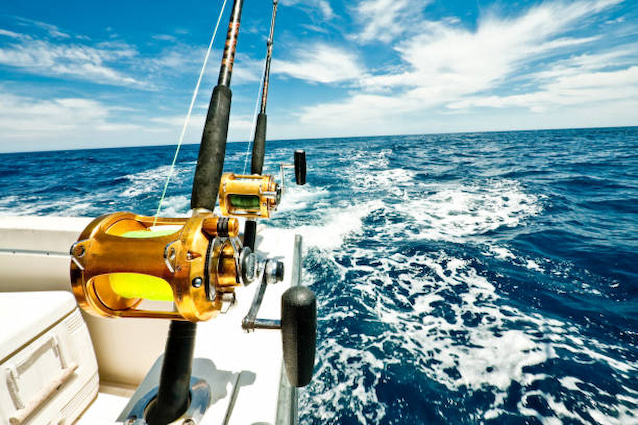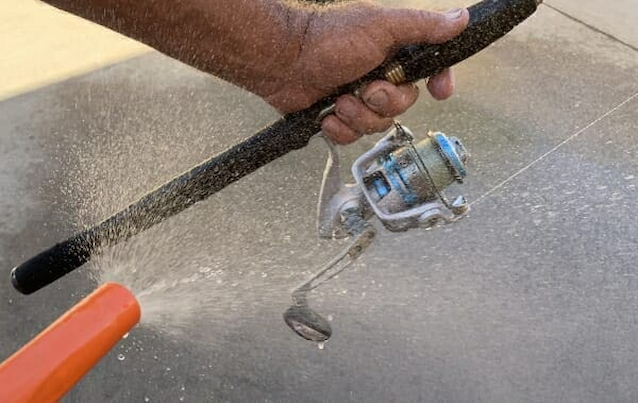The Importance of Choosing the Right Saltwater Reel
Saltwater fishing can be very exciting. However, it demands a specific type of gear built to handle tough conditions like salt, sand, and strong fish. Not all spinning reels are designed for this environment. Choosing the right saltwater one can make your fishing much easier and more successful, and protect your investment.
Why the Right Reel Matters

When you’re fishing in saltwater, your gear is exposed to harsh elements. There’s the salt that can corrode metals very quickly, and sand that can jam some of the moving parts. Using freshwater reels in these conditions won’t help you. It can cause greater damage, poor performance and make you very frustrated.
Choosing the right reel is also important because of the size of the fish. The ones living in saltwater and usually bigger and stronger which means you need a sturdier reel. This way you’ll have more drag power to handle the fight. Getting high-quality, corrosion-resistant saltwater spinning reels is important if you want to get gear that works smoothly and lasts longer.
These types of reels are made to cast long distances and stand up to the wear and tear of the harsh saltwater environment. Take your time, look around and make a good decision. Rushing into the buying process will only bring extra expenses, wasted time and a lot of frustration.
Match the Reel to Your Fishing Style
Saltwater fishing comes in many forms. The type of reel you choose to do the job will depend on what you’re fishing and where you’re fishing. If you’re going inshore in places like bays, estuaries or nearshore water, you’ll need a smaller reel. Something lighter and easier to handle. You can cast them with a lighter tackle. These reels are perfect for flathead, snapper and whiting.
If you’re going offshore fishing in deeper waters, you’ll need a reel with bigger line capacities. They also have stronger drag systems and can handle heavier lines. As a result, the pressure of battling with larger game, such as kingfish or tuna, won’t be an issue. Some people enjoy surf fishing. This is fishing from the beach or rocks.
If you’re a fan, you should get reels that are designed to stand up to sand intrusion and can cast long distances. These types of reels have bigger line capacities and are coated with a corrosion-resistant finish. As you can see, choosing the reel based on your fishing preferences is very important.
What to Consider when Buying
Reel Size
Reels made for saltwater are usually between sizes 3000 and 8000 and more. Smaller reels hold less line but are lightweight. Larger reels hold more line and deliver stronger drag pressure but are also heavier. The size you choose depends on the fish species and line weight you want to use. For example, a 4000 or 5000 size reel is good for general inshore fishing, while a 7000 or higher is better for big offshore targets.
Gear Ratio
The gear ratio will tell you how fast the reel retrieves the line. Higher gear ratios mean faster line retrieval. This is very helpful with lure fishing or when you need speed to reel in slack. Lower ratios are better when you’re fighting with heavy fish. It’s easier to pull fish out of strong currents or structures.
Drag System
A smooth and powerful drag is crucial for controlling fish runs and preventing the line from breaking. Front drag systems are common for saltwater spinning reels because you can easily and more precisely adjust the drag during the fight. You should have a drag that will be strong enough to handle the fish you’re going for but also smooth enough to avoid sudden jerks.
Materials
Some of the best materials for these types of reels are anodized aluminum and stainless steel. This is the perfect choice because the reel needs to be corrosion-resistant and protected from all the moisture. Sealed bearings and drag systems help keep saltwater and sand out of moving parts. If you want your reel to last, don’t buy models with plastic gears and unsealed components.
Line Capacity
Fish that live in saltwater will often make long runs to escape. Your reel should hold enough line to handle these bursts. Check the reel’s line capacity for your chosen line weight and make sure it matches the demands of your fishing. Running out of line during a fight can mean losing your catch.
Extra Features to Consider
There are some extra features on the saltwater fishing spinning reel that can help you during your saltwater fishing adventures. Sealed bearings and gears will prevent salt, dirt and sand from making their way inside the reel. This will prolong its life and make sure it works smoothly. The anti-reverse switch stops the handle from spinning backwards. This gives you more control during a fight.
You have the choice between a manual and an automatic bail. This comes down to personal preference and what you’re more comfortable with. The manual one gives you more control, but the automatic bail closes on its own. Last but not least, choose a reel that’s comfortable to hold because oftentimes you’ll spend hours holding it in your hands.
Caring for Your Reel

Proper care and maintenance are key if you want your reels to last longer. When you’re done for the day, always rinse the reel with fresh water to remove the salt, sand and dirt. Use a soft cloth to dry it completely. Once in a while, lubricate the moving parts so they can work smoothly.
Anytime you can, avoid submerging your reel in water, as this can force salt inside. If you notice rough drag, sticking gears, or unusual noises, it may be time to clean and service your reel. Taking care of your equipment extends its life and keeps it performing well for many fishing trips to come.
Final Thoughts
Choosing the right saltwater reel helps you fish more effectively and protects your gear investment. Consider your fishing environment, target species, and the reel’s features carefully. With the right reel, you’ll enjoy smoother casts, better control, and longer-lasting performance on every saltwater fishing trip.



